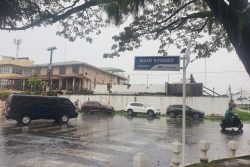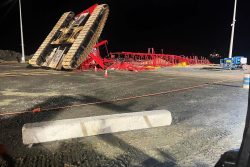Amidst the official preoccupation with the perceived development prospects that repose in an economic engine which, these days, is driven by oil, it is easy to ‘leave aside’ the discipline-related crisis in significant sections of our education system which, for want of any serious attempt at remedy, up to this time, grows, to the considerable discredit of the Ministry of Education.
The recent spate of violence in and around schools is severely disquieting. Video surfaced just on April 30th, depicting two outsiders entering the compound of Queenstown Secon-dary School and assaulting a student. Accord-ing to a parent from the school, five students had previously assaulted another student and it was this victim’s father and brother who decided to take matters into their own hands by entering the school and attacking one of the assailants.
“Five Queenstown students hit a classmate. And the father and the brother of the victim took the law into their own hands and went to attack one of the aggressors who started the problem. Now that the HM doesn’t do anything, people [are] beginning to take justice into their own hands,” the parent told Stabroek News.
The available evidence strongly suggests that there are some sections of the state school system where the designated functionaries assigned to administer discipline have had to cede a considerable amount of clout elsewhere, to what now appears to be a rumbustious force comprising children, whose ostensible purpose for being there is to receive an education, along with their outside-of-school ‘handlers.’
Such spurious arguments as the ‘system’ might make to the contrary the facts are irre-futable. Across a significant swathe our school system uproarious groups along with their outside acolytes and handlers ‘run things’ to a significant degree. Their power bases repose in their prerogative to fashion their own rules and, simultaneously, to render themselves immune to formal disciplinary structures.
The ‘rules’ are backed not just by a culture of bullyism that confronts the in-school disciplinary regime that is key to holding ‘good order’ together, they are also backed by what, all too frequently, are outside forces that are unmindful of the rules and conventions that go with education delivery.
To cut to the chase what our schools are confronted with is a tidal wave of rejection of structures responsible for anything resembling lawfulness and good order, that outlook having its roots in homes and other socio-cultural enclaves that are, in themselves, inherent-ly both disruptive and destructive in their nature. Where, regrettably, homes and communities – which are the creators of school populations – are steeped in various forms of deviant behaviour, these will, regrettably, export themselves into the classroom.
Over time there has emerged an increasingly persuasive argument to the effect that what we refer to as the country’s education system, its bureaucrats and its uncreative, circular-driven rules continues to rob the Ministry of the proper institutional tools with which to handle the problem. The system, truth be told, has a proclivity for issuing directives through circulars which, not infrequently carry generous doses of what, are perceived to be diktat. The approach is both boorish and predictable and has grown sufficiently repetitive to cause them to lose their intended effect. What has been abundantly clear, particularly during times of challenge that require a ‘pull together’ response between teachers and the Ministry is that, to a considerable degree, there is no love lost there. While the Ministry of Education is itself possessed of tools to handle the disorder, where it continues to limit the authority of school administrators and teachers, it will continue to reduce its Heads of Schools and Teachers, who are, in effect their first and most important line of defence against in-school insurgency to powerless bystanders. Teachers, these days, often have no hesitation in conceding the turning of their backs to some of the most egregious transgressions by students. It is an admission of uncertainty regarding the extent of their own authority as well as a mindfulness of the menacing ‘clout’ that ‘tear-away’ children possess.
While other editorials in this newspaper have sought to shed some light on the phenomenon of violence-related challenges in the school system there exists little serious evidence that the Ministry of Education has sought to act decisively on the problem.
Over time, it has favoured the option of selective interventions which, following the initial ‘huff and puff’ leaves the situation largely unchanged. It has to put an end to its own ‘huffing and puffing’ and join forces with its allies in the school system to turn things around. Otherwise, it will be compelled to ‘carry the can’ for the continual meltdown of discipline whatever excuses it may choose to put in the public space.
Minister of Education Priya Manickchand recently told this newspaper that an anti-violence pilot programme initiated at the Campbellville Secondary School last year has seen success, as there has been a decrease in reported incidents of violence.
She said that the programme involved increased parental involvement, extracurricular activities, and clear expectations outlined in contracts signed by parents and students. Due to its success, she said the ministry plans on replicating it in other schools with similar issues. The public will keep an eye open for the progress of this programme.





